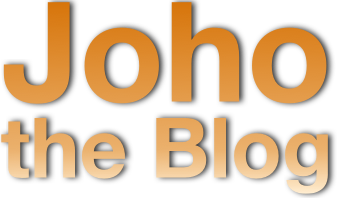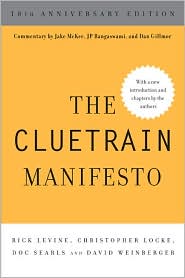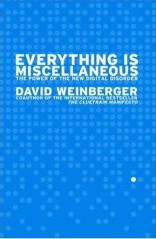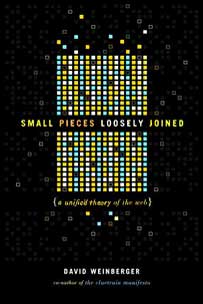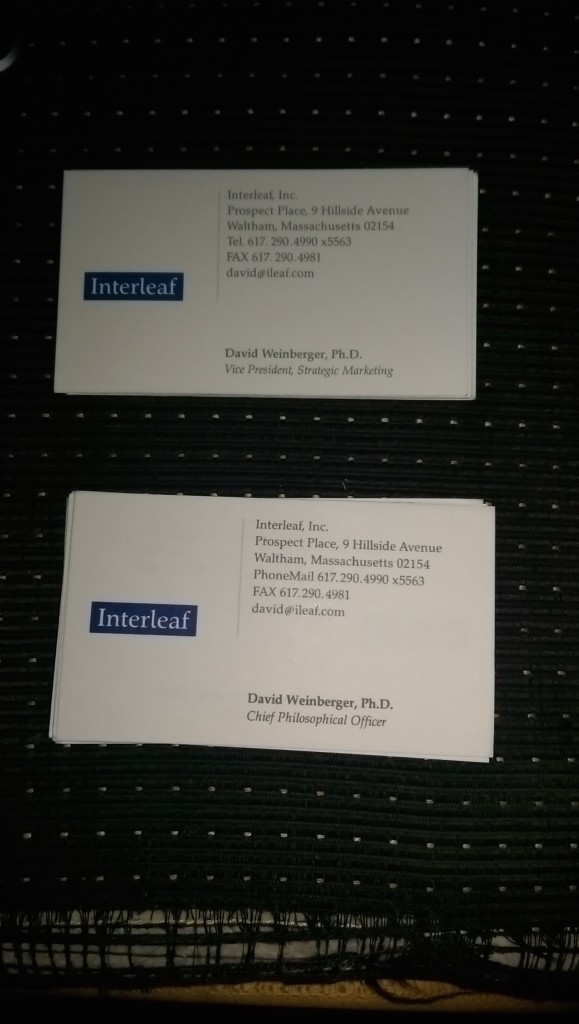March 19, 2018
[liveblog] Kate Zwaard, on the Library of Congress Labs
Kate Zwaard (twitter: @kzwa) Chief of National Digital Strategies at the Library of Congress and leader of the LC Lab, is opening MIT Libraries’ Grand Challenge Summit..The next 1.5 days will be about the grand challenges in enabling scholarly discovery.
|
NOTE: Live-blogging. Getting things wrong. Missing points. Omitting key information. Introducing artificial choppiness. Over-emphasizing small matters. Paraphrasing badly. Not running a spellpchecker. Mangling other people’s ideas and words. You are warned, people. |
For context she tells us that the LC is the largest library in the world, with 164M items. It has the world’s largest collection of film, maps, comic books, telephone directories, and more. [Too many for me to keep this post up with.]
-
You can wolk for two football fields just in the maps section. The world’s largest collection of recorded sound. The largest collection
-
Personal papers from Ben Franklin, Rosa Parks, Groucho Marx, Claude Shannon, and so many more.
-
Last year they circulated almost a million physical items.
-
Every week 11,000 tangible items come in through the Copyright office.
-
Last year, they digitized 4.7M iems, as well 730M documents crawled from the Web, plus much more. File count: 243M and growing every day.
These serve just one of the LC’s goal: “Acquire, preserve, and provide access to a universal collection of knowledge and the record of America’s creativity.” Not to mention serving Congress, and much more. [I can only keep up with a little of this. Kate’s a fantastic presenter and is not speaking too quickly. The LC is just too big!]
Kate thinks of the LC’s work as an exothermic reaction that needs an activation energy or catalyst. She leads the LC Labs, which started a year ago as a place of experimentation. The LC is a delicate machine, which makes it hard for it to change. The Labs enable experimentation. “Trying things that are easy and cheap is the only way forward.”
When thinking about what to do next, she things about what’s feasible and the impact. One way of having impact: demonstrating that the collection has unexplored potentials for research. She’s especially interested in how the Labs can help deal with the problem of scale at the LC.
She talks about some of Lab’s projects.
If you wanted to make stuff with LC data, there was no way of doing that. Now there’s LC for Robots, added documentation, and Jupyter Notebooks: an open source Web app that let you create open docs that contain code, running text, etc. It lets people play with the API without doing all the work from scratch.
But it’s not enough to throw some resources onto a Web page. The NEH data challenge asked people to create new things using the info about 12M newspapers in the collection. Now the Lab has the Congressional Data Challenge: do something with with Congressional data.
Labs has an Innovator in Residence project. The initial applicants came from LC to give it a try. One of them created a “Beyond Words” crowdsourcing project that asks them to add data to resources
Kate likes helping people find collections they otherwise would have missed. For ten years LC has collaborated wi the Flickr Commons. But they wanted to crowdsource a transcription project for any image of text. A repo will be going up on GitHub shortly for this.
In the second year of the Innovator in Residence, they got the artist Jer Thorp [Twitter: @blprnt] to come for 6 months. Kate talks about his work with the papers of Edward Lorenz, who coined the phrase “The Butterfly Effect.” Jer animated Lorenz’s attractor, which, he points out, looks a bit like a butterfly. Jer’s used the attractor on a collection of 3M words. It results in “something like a poem.” (Here’s Jer’s Artist in the Archive podcast about his residency.)
Jer wonders how we can put serendipity back into the LC and into the Web. “How do we enable our users to be carried off by curiousity not by a particular destination.” The LC is a closed stack library, but it can help guide digital wanderers. ”
Last year the LC released 25M catalog records. Jer did a project that randomly pulls the first names of 20 authors in any particular need. It demonstrates, among other things, the changing demographics of authors. Another project: “Birthy Deathy” that displays birthplace info. Antother looks for polymaths.
In 2018 the Lab will have their first open call for an Innovator in Residence. They’ll be looking for data journalists.
Kate talks about Laura Wrubel
‘s work with the Lab. “Library of Congress Colors” displays a graphic of the dominant colors in a collection.
Or Laura’s Photo Roulette: you guess the date of a photo.
Kate says she likes to think that libraries not just “book holes.” One project: find links among items in the archives. But the WARC format is not amenable to that.
The Lab is partnering with lots of great grops, including JSONstor and WikiData.
They’re working on using machine learning to identify place names in their photos.
What does this have to do with scale, she asks, nothng that the LC has done pretty well with scale. E.g., for the past seven years, the size of their digital collection has doubled every 32 months.
The Library also thinks about how to become a place of warmth and welcome. (She gives a shout out to MIT Libraries’ Future of Libraries
report). Right now, visitors and scholars go to different parts of the building. Visitors to the building see a monument to knowledge, but not a living, breathing place. “The Library is for you. It is a place you own. It is a home.”
She reads from a story by Ann Lamott.
How friendship relates to scale. “Everything good that has happened in my life has happened because of friendship.” The average length of employment of a current employee is thirty years. — that’s not the average retirement year. “It’s not just for the LC but for our field.” Good advice she got: “Pick your career by the kind of people you like to be around.” Librarians!
“We’ve got a tough road ahead of us. We’re still in the early days of the disruption that computation is going to bring to our profession.” “Friendship is what will get us through these hard times. We need to invite peopld into the tent.” “Everything we’ve accomplished has been through the generosity of our friends and colleagues.” This 100% true of the Labs. It’s ust 4 people, but everything they do is done in collaboration.
She concludes (paraphrasing badly): I don’t believe in geniuses, and i don’t believe in paradigm shirts. I believe in friendship and working together over the long term. [She put this far better.]
Q&A
Q: How does the Lab decide on projects?
A: Collaboratively
Q: I’m an archivist at MIT. The works are in closed stack, which can mislead people about the scale. How do we explain the scale in an interesting way.
A: Funding is difficult because so much of the money that comes is to maintain and grow the collection and services. It can be a challenge to carve out funding for experimentation and innovation. We’ve been working hard on finding ways to help people wrap their heads around the place.
Q: Data science students are eager to engage, e.g., as interns. How can academic institutions help to make that happen?
A: We’re very interested in what sorts of partnerships we can create to bring students in. The data is so rich, and the place is so interesting.
Q: Moving from models that think about data as packages as opposed to unpacking and integrating. What do you think about the FAIR principle: making things Findable, Accesible Interoperable, and Reusable? Also, we need to bring in professionals thinking about knowledge much more broadly.
I’m very interested in Hathi Trust‘s data capsules. Are there ways we can allow people to search through audio files that are not going to age into the commons until we’re gone? You’re right: the model of chunks coming in and out is not going to work for us.
Q: In academia, our focus has been to provide resources efficiently. How can weave in serendipity without hurting the efficiency?
A: That’s hard. Maybe we should just serve the person who has a specific purpose. You could give ancillary answers. And crowdsourcing could make a lot more available.
[Great talk.]
